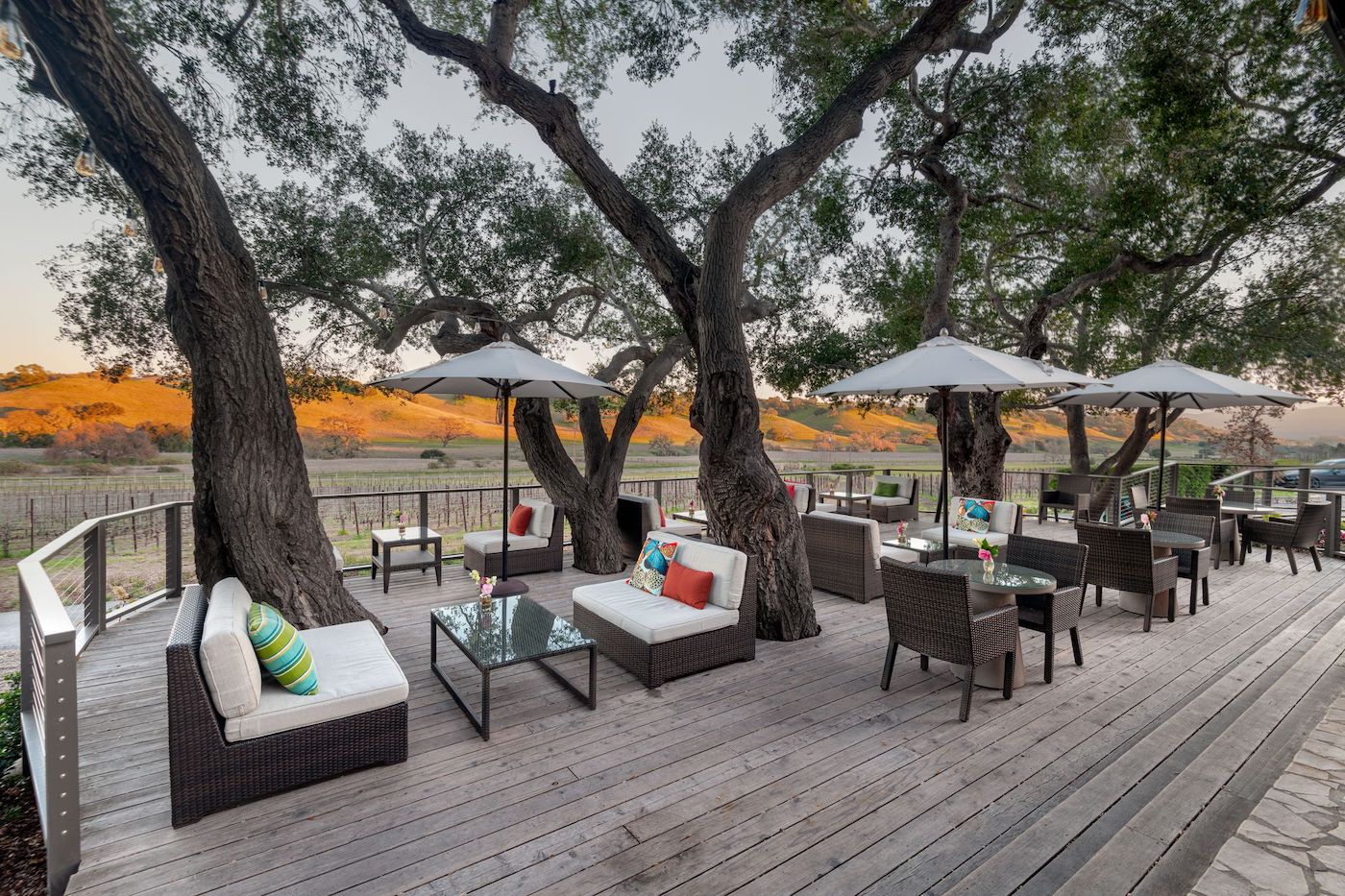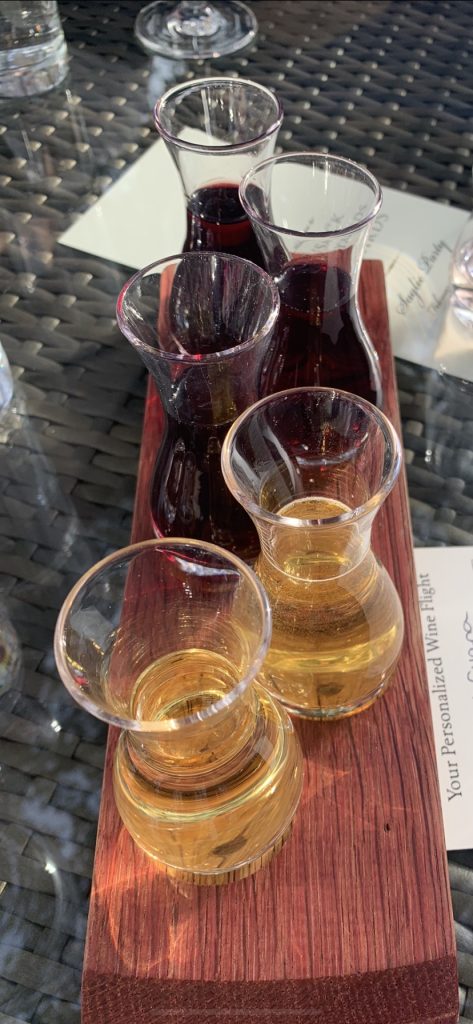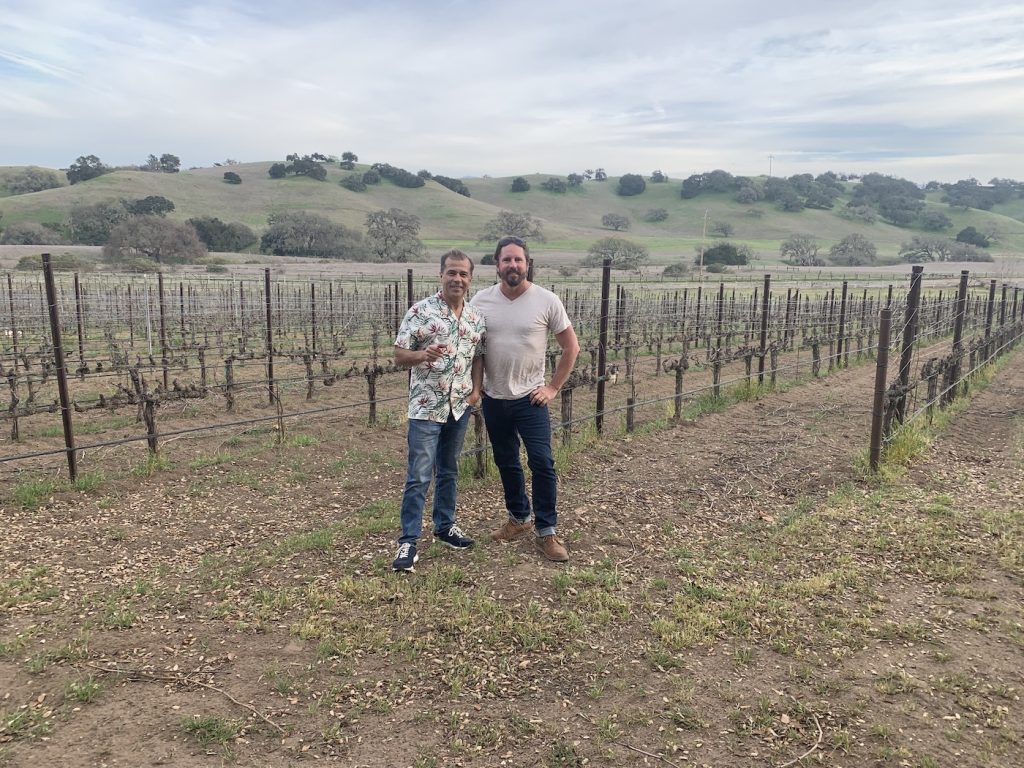Mission Accomplished: New Rusack Visitor Center Redefines the Wine Tasting Experience

I’ve discovered the perfect afternoon sipper – Rusack Vineyards just released its 2021 Boundless Mission ($28), a wine that is, quite literally, history in a bottle. The mission grape was brought over to the Americas in the 1700s by Spanish Catholic missionaries who didn’t want to go without table and sacramental wine along the way. Mission grapes that had been planted on Santa Cruz Island, and that thrived a century ago, were yanked during Prohibition. But a few resilient vines survived and when recently discovered, were gathered by the Rusack team and planted on about a half-acre of their sprawling Ballard Canyon estate.

With the 2021 vintage, Rusack’s second, winemaker Steve Gerbac is not only helping to write the next episode in the history of this under-the-radar grape, but also a whole new chapter in the way it’s appreciated. Long considered unimpressive, it turns out that, when handled well, mission wine has merit. Gerbac thins the vines aggressively during the growing season and picks the grapes early. The resulting wine is fresh – with alcohol at 12% or less – donning a light ruby color accented by flavors of plum and red berries. “Refreshing and fun,” says the winemaker, especially when served up chilled. An easy match for finger foods and sandwiches, and perfect on a picnic or by the pool. Only 36 cases of this wine – one of the very few California Mission wines – were made.
The Mission is part of a new Rusack project – Boundless – which aims at giving Gerbac creative freedom from vintage to vintage. “It’s about experimentation,” he says, “so the wines can always be different.” For 2021, the label also includes a splashy Rosé ($22), made with estate syrah and zinfandel grapes.
The latest Boundless wines coincide with something else that’s new and exciting at Rusack: a revamped hospitality experience that helps set a new benchmark for the consumer wine tasting experience. Their visitor center has always been stunning – set on 20 acres along Ballard Canyon Road in Solvang amidst undulating oak-dotted hills as far as the eye can see. The pandemic forced a two-year shutdown, but also a chance to rethink and revise. It reopened to the public this past weekend.
There’s an escapist vibe to the new Canyon Terrace, thanks to lush landscaping and an open, plein-air design. A new entryway leads to a stepped tasting deck featuring upscale furniture and new railing that maximizes those endless vistas. Visitors are greeted by a glass of seasonal wine – I was handed a glass of rosé when I visited Sunday – before they’re escorted to their tables.
Visits here are by appointment only now, a move that does require a bit more pre-planning but one that also guarantees a far more personalized experience. Scrambling for a spot at the bar? Gone. Being forced to taste through a pre-determined wine list? Gone. Guests are treated to tableside service and handed a customizable menu that features almost all of Rusack’s current releases – including experimental projects, like Boundless, that were created during the pandemic – by the glass or by the bottle, or as part of tasting flights you can create yourself. That means a chardonnay lover, for example, can order a flight of all four currently released Rusack chards, and fans of syrah or pinot noir or zinfandel can craft a flight of myriad red selections. It’s the ultimately personal sipping moment. Cheese and charcuterie platters are available for purchase with advance notice.
The Island Flavor
I let Gerbac put together our shared flight this past weekend. It included wines from the Rusack’s Santa Catalina Island wines, which would have been tough to access at the tasting room pre-COVID. This is another fascinating Rusack connection to Channel Islands winegrowing, and one that’s far more personal. Geoff Rusack married Alison Wrigley in 1985, establishing their wine brand 10 years later, and the viticulture they’ve spearheaded on Catalina in the last dozen years has, in many ways, been an homage to the Wrigley family – chewing gum magnates, baseball team owners, and stewards of all the developable land on Santa Catalina Island since 1919. Rusack manages five acres of grapes there – chardonnay, pinot, and zin – which are harvested each fall and flown by private plane to the mainland for processing at the Rusack winery.
Gerbac and I compared the 2018 and 2015 Santa Catalina Island chardonnay ($60), the younger wine showcasing heightened freshness but both exuding complexity and minerality, but also depth. “The island can get really foggy,” he tells me. “Sunshine breaks down malic acid in grapes,” and with less of it on a fog-doused Catalina, the chardonnay grapes maintain a wonderfully layered and buxom mouth feel.

We tasted the 2017 Mt. Carmel Pinot Noir ($65), sourced from a celebrated Sta. Rita Hills vineyard, with a classic cherry character but enhanced by an earthier, dustier flavor profile and grippier tannins.
And we finished with side-by-side sipping of the 2018 Santa Catalina Island Zinfandel ($72) – cherry notes upfront buoyed by an umami-like flavor profile – and the 2017 Ballard Canyon Estate Zinfandel ($48) – comparatively, more generous with red fruit flavors, nuances of oak, and a velvety finish.
My favorite part of my visit this past weekend, though, was the palpable enthusiasm of folks like Gerbac, tasting room manager Stephanie Varner, and members of the Rusack hospitality team. Seeing people buzzing at the tables across the al fresco tasting deck, engaging with visitors, telling the story behind their wines – it’s all such a stark change from the many months of distance and closures. It felt good to be part of wine-inspired conversation and conviviality. The roads that lead through Santa Barbara wine country are back open, and Rusack should be one of your first stops.
For more information and reservations, go to rusack.com/visit.







You must be logged in to post a comment.